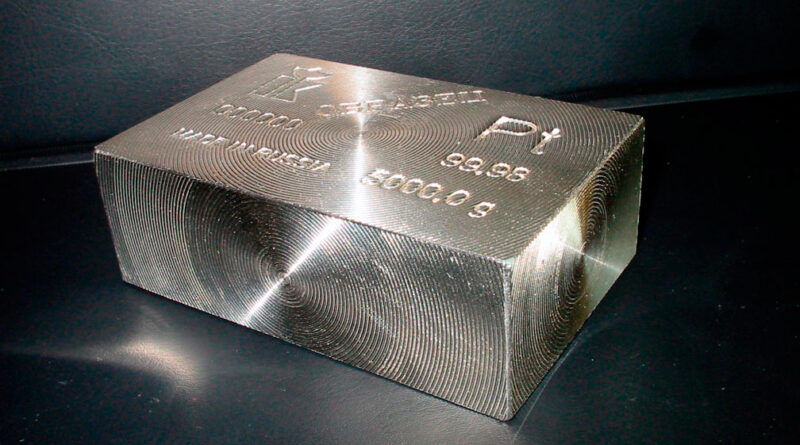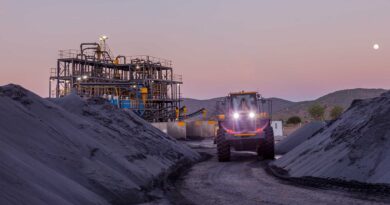Platinum supply and demand recovered significantly in Q3 2020
According to the World Platinum Investment Council (WPIC), platinum supply and demand both recovered significantly in the third quarter of 2020 when compared to the second quarter, but overall still weak supply and strong investment demand are behind the large deficits in quarter three and for the full 2020 year of over -700 koz and over -1.2 moz respectively. The forecast deficit in 2021 will be over -220 koz.
The negative COVID-19 pandemic effects continued through the third quarter, but widespread easing of restrictive pandemic control measures, combined with government stimulus measures, saw economic activity accelerate globally compared to activity levels in the second quarter.
Platinum supply and demand picked up significantly through the quarter, with mines ramping back towards full capacity, refined processing capacity returning to more normal levels, and demand in the automotive and jewellery segments experiencing sharp V-shaped recoveries.
The WPIC says forecasts of supply and demand not just for 2020, but also for 2021, are likely to continue to be subject to change due to the ongoing impacts of the pandemic. Parts of the Western world, notably in Europe, have been pitched back into strict lockdowns to combat a second wave of COVID-19 infections.
This increases near-term uncertainty regarding levels of economic activity in Q4 and early 2021 and has heightened concerns over longer-term government debt levels as more support measures are introduced to combat the negative impact on economies.
The platinum market is now projected to be in a significant deficit this year, as the updated 2020 forecast now signals a record annual deficit of -1,202 koz compared to the prior estimate of a -336 koz deficit just two months ago.
The combination of supply losses due to pandemic-driven mine closures, ongoing South African processing disruption, and strong investment demand more than offsets lower COVID-19-impacted automotive, jewellery and industrial demand.
For 2021, the initial forecast shows the platinum market in deficit for a third consecutive year. The -224 koz deficit reflects a 17% pick-up in supply and a 2% increase in demand, with the latter largely due to lower, albeit still well above the historic trend, investment demand.
Total platinum demand in 2020 is forecast to be 7,940 koz, 5% (-410 koz) lower than in 2019 due to reduced demand in the automotive (-464 koz), jewellery (-274 koz), and industrial (-79 koz) segments.
However, weakness in these demand segments is expected to be partially offset by continued strong investment demand, with investment volumes expected to be up 32% (+406 koz) to a record high of 1,659 koz.
Heightened global risk is expected to continue to drive investor demand for hard assets, with 2020 bar and coin demand forecast to grow by 123% to 629 koz.
Total platinum supply in 2020 is now forecast to fall by 18% (-1,524 koz) to 6,738 koz and reflects a 22% (-1,318 koz) decline in refined production and a 10% (-224 koz) decline in recycling supply.
Supply expectations for the year, already impacted during the first two quarters by COVID-related mine closures and the Anglo American Platinum converter plant (ACP) outage, have been further downgraded due to a similar, additional ACP closure until year-end, announced in early November.
For 2021, the initial forecast shows total platinum supply rising 17% above 2020 levels, to 7,865 koz.
The recovery is driven by an expected 21% pick-up in refined production, and an 8% rebound in recycling. South Africa accounts for the bulk of this projected production recovery due to the expected recommissioning of the ACP converter plant in January and a return to near full capacity mine production after 2020’s pandemic-related curtailments.
Demand in 2021 is expected to recover to 2% above 2020 pandemic-impacted levels. In particular, automotive demand is projected to recover strongly, by 24%, to 2,996 koz, taking demand to 4% above the level in 2019.
The full implementation of Euro 6d and China 6b emissions regulations for light-duty vehicles, and importantly China VI for heavy duty vehicles, are key drivers of automotive demand. Indeed, demand from the automotive, jewellery, and industrial categories is forecast to rise by 17%, countering the lower forecast investment demand and resulting in a third consecutive annual deficit for the platinum market, of -224 koz.




